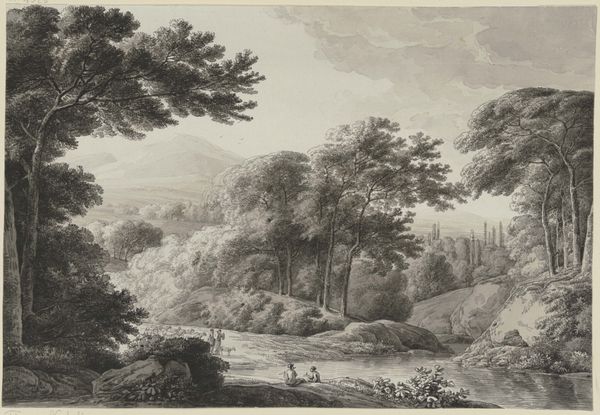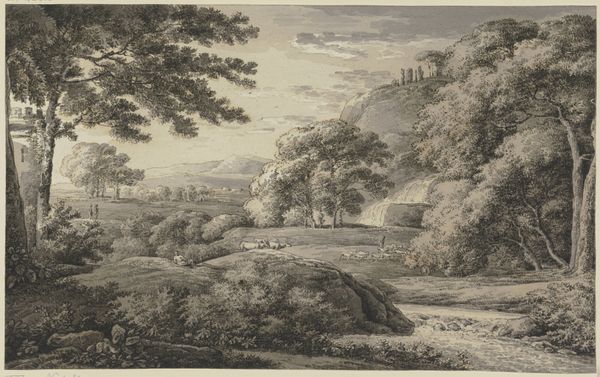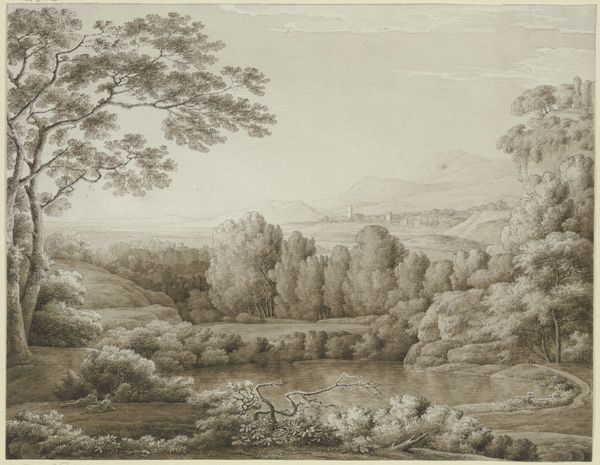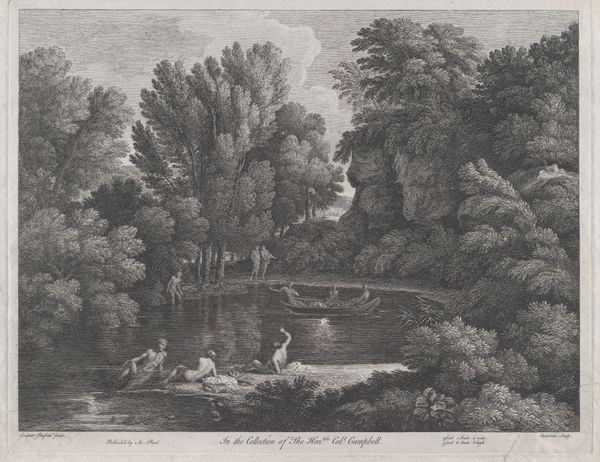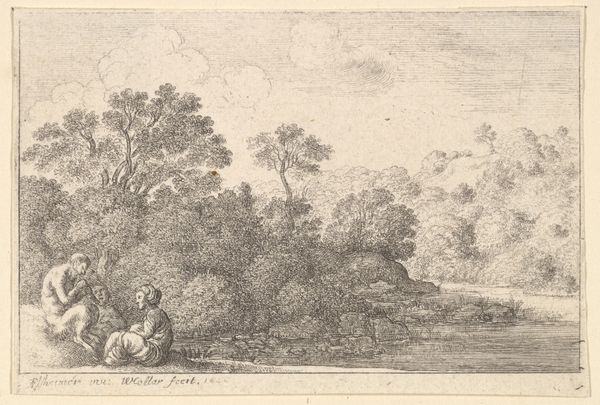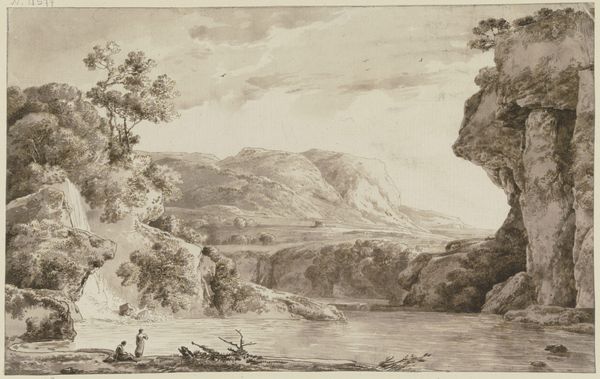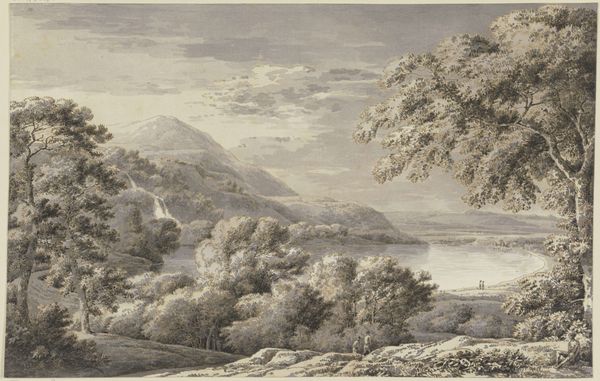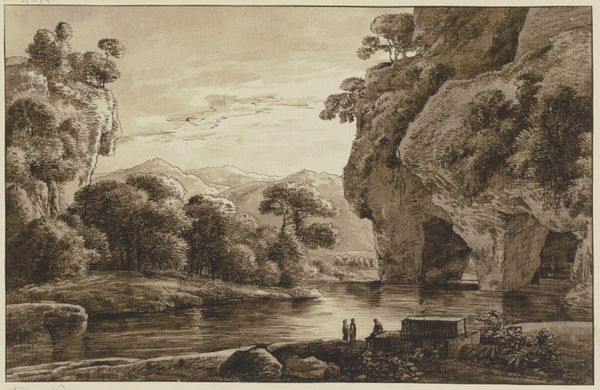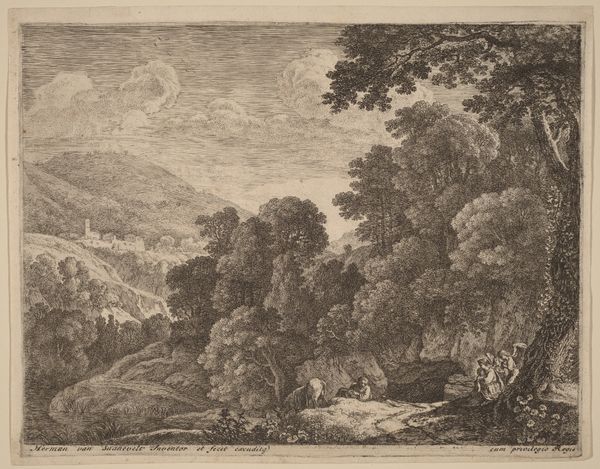
drawing, ink, graphite
#
drawing
#
landscape
#
charcoal drawing
#
ink
#
15_18th-century
#
graphite
Copyright: Public Domain
Curator: Franz Kobell's "Landscape with Lake and Round Tower" at the Städel Museum presents a serene scene rendered with ink, graphite, and charcoal. What's your initial take on this tranquil landscape? Editor: It possesses a hushed stillness, doesn't it? The subdued palette emphasizes the gentle undulation of the water and the softness of the foliage. I'm immediately drawn to the textural variations – the smooth expanse of the water against the rough-hewn rocks. Curator: Absolutely. The drawing offers us a window into 18th-century sensibilities concerning nature. Consider how landscape depictions during this period often intersected with notions of land ownership, social status, and power dynamics. Were these really such innocent observations of bucolic settings? Editor: Intriguing! But let’s not overlook the purely formal elements at play here. The composition’s structure invites the eye to travel from the foreground, across the placid water, to that strategically placed round tower nestled amidst the trees. Curator: Right, the placement isn't accidental. The tower operates as a symbolic element, reminding us of civilization and control. Yet, note how diminutive it is within the vastness of the landscape. Doesn't that subtle contrast challenge assumptions about humanity's dominance over nature? Moreover, who had the leisure time to appreciate, record, and possess these picturesque views? Editor: Yes, there’s a tension created. Let's think about the artist’s material choices, too. The delicate application of ink and graphite produces nuanced tonal shifts. Consider how each line, each shadow, meticulously contributes to the image's spatial depth, subtly guiding our gaze. Curator: Indeed, even in what seems to be a straightforward landscape drawing, we can unpack layered dialogues about humanity, environment, and social position. And to whom this natural world was available. Editor: Analyzing its formal structure unveils not only aesthetic refinement but, I would suggest, Kobell’s manipulation of visual space. That tower really seals it; the drawing speaks to the controlled, idealized views popular during its time. Curator: It's precisely these types of intersections between historical context and formal choices that make the artwork speak volumes to us now. Editor: And prompts us to see landscape as both image and cultural artifact. A rich conversation to have!
Comments
No comments
Be the first to comment and join the conversation on the ultimate creative platform.
